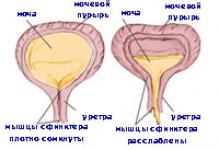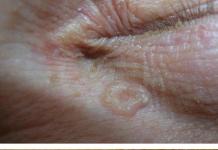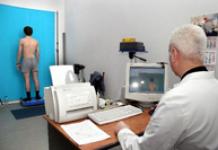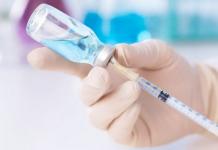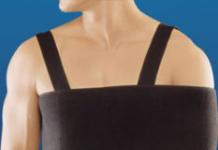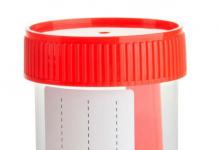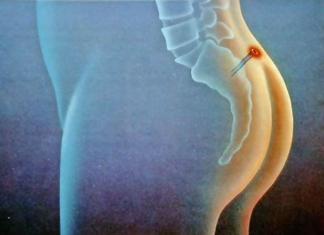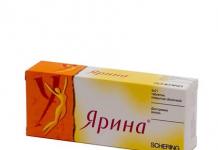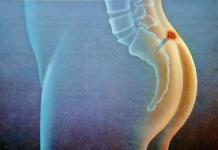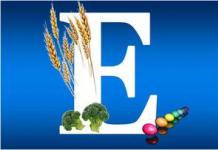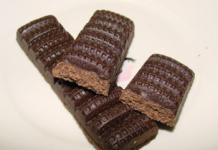Blood pressure greater than 120/80 is considered elevated. Even if only the upper or only the lower parameter exceeds the norm, measures must be taken to stabilize it. Otherwise, serious consequences arise, in extreme cases even death is possible. Pharmacological agents or folk recipes will help lower blood pressure.
A tonometer is an indispensable thing for hypertensive patients.
Causes and symptoms of high blood pressure
The reasons for high blood pressure are quite varied. It rises briefly after intense physical activity, drinking coffee, tea, alcohol, and due to certain medications. After a short period of time, the parameters stabilize.
Constant high arterial pressure(hypertension) develops as a result of the following factors:
- Hereditary tendency.
- Frequent stress, nervous strain, lack of proper rest.
- Excessive amounts of saturated fatty acids in the diet. They are found in palm and coconut fats, sausages, cakes, and cookies.
- Constant consumption of large amounts of salt.
- Alcohol abuse, smoking.
- Passive lifestyle.
- Having excess weight.
- Kidney diseases.
The likelihood of developing hypertension increases with age. People over 35-40 years of age are at risk. Especially those who do not adhere to a balanced diet ignore regular physical exercise.
 Excessive smoking often leads to high blood pressure
Excessive smoking often leads to high blood pressure High blood pressure is manifested by the following symptoms:
- Headaches, dizziness - if your head hurts severely, your temples “pulse”, it means your blood pressure has risen sharply.
- Pain in the heart area.
- Deterioration of vision - its sharpness is lost, the eyes become dark.
- Cardiopalmus.
- Feeling hot, the face turns red, while the hands and feet become cold.
- Nausea.
- Noise in ears.
- Unreasonable feeling of anxiety.
- Increased sweating.
- Feeling tired, exhausted.
If such symptoms appear, you must immediately measure your blood pressure using a tonometer. If its parameters are increased, it is important to quickly take measures to stabilize them.
What to do with high blood pressure
If the norm is exceeded, you need to reduce the pressure before it starts hypertensive crisis. This acute condition, characterized by pressure 200/110 or more. Then emergency medical attention is required.
 Feeling tired may be a symptom of high blood pressure
Feeling tired may be a symptom of high blood pressure If a person’s blood pressure increases significantly, he needs to lie down with his head on a high pillow. The room where it is located should have a good flow of cool, fresh air.
At home, it is easy to carry out procedures that normalize high blood pressure:
- Make a hot bath for your feet - hot water is poured into a basin, its temperature should be such that you can freely immerse your foot up to the ankle. The duration of the procedure is 5-10 minutes. During this time, blood will flow out of the head, and the condition will improve.
- Mustard plaster on the back of the head or the calf - moisten the mustard plaster in warm water and apply to the back of the head or the calf of the leg. Keep for 5-15 minutes.
- Apple cider vinegar compresses - soak paper napkins in apple cider vinegar, apply them to your feet for 10-15 minutes.
- Breathing exercises - sit straight in a chair and relax, take 3-4 breaths. Then inhale through your nose 3-4 times and exhale through your mouth. The next step is to inhale through your nose and exhale through your mouth, keeping your lips closed. Repeat 3-4 times. The final stage of this exercise is to inhale through the nose with a slow tilt of the head back, exhale through the mouth, in which the head falls forward. Repeat 3-4 times. All manipulations are performed smoothly and slowly.
 A foot bath is a good way to normalize blood pressure
A foot bath is a good way to normalize blood pressure When trying to quickly reduce high blood pressure, it is important to ensure that it decreases gradually, by a maximum of 25-30 points per hour. Sudden jumps have a negative impact on health.
Medicines and traditional recipes are used to treat hypertension. Pharmacological agents are prescribed when a person has persistent high blood pressure (our review of the best blood pressure medications), if it reaches and exceeds 160/90. In such cases, the following tablets are effective:
- Cyclomethiazide– a drug that activates urination and helps relieve swelling. Due to this, the lumen of the vessels expands and the pressure decreases. The effect is felt 1.5 hours after administration and lasts 6-12 hours.
For a single dose, the dose of the drug is 25-50 mg. With systematic therapy, the doctor prescribes 12.5-25 mg tablets, depending on the current condition.
 If you have constant high blood pressure, you need to take special tablets
If you have constant high blood pressure, you need to take special tablets Contraindications – renal and liver failure, pregnancy, lactation, Addison's disease, age up to 3 years. Side effects– muscle pain, dizziness, allergies, pulmonary edema, nausea, diarrhea. Price – from 40 rub.
- Cariol– a drug related to beta-blockers. All drugs in this group are prescribed to people who have survived a heart attack, suffering from heart failure, or angina pectoris. The active ingredient is carvedilol.
The dose of the drug for treatment is 25-50 ml once a day. Contraindications – liver disease, bronchial asthma, lactation, age up to 18 years. Side effects - a sharp decline pressure, bradycardia, allergies.
Price – from 380 rub. Other drugs in this group are Cardivas, Bagodilol, Carvidil Dilatrend.
- Indapamide– a medicine that belongs to the group of sulfonamides. Prescribed for complex therapy in complex cases when other medications are ineffective. Take 2.5 mg tablets once a day for at least 7-10 days.
Contraindications: pregnancy, low potassium levels in the blood, liver and kidney failure, lactose intolerance. Side effects - insomnia, nausea, depression, allergies. Price – from 35 rub.
 Enalapril – 20 mg 20 tablets
Enalapril – 20 mg 20 tablets Other tablets for the treatment of hypertension are Enalapril, Enap, Prestarium, Lisinoton, Diroton, Perineva, Quadropril, Teveten, Twinsta, Amlotop, Diacordin. A doctor will help you choose an effective and safe medicine.
If your blood pressure fluctuates greatly, it is enough to take pills as part of pharmacological therapy. Injections are prescribed in extreme cases, when hypertension is accompanied by serious complications: acute coronary syndrome, vision deteriorates, and blood circulation in the brain is impaired.
 Tablets from high pressure"Prestarium"
Tablets from high pressure"Prestarium" Have a safer effect on the body traditional methods treatment of hypertension.
Let's look at the simplest and most effective recipes:
- Grate a medium-sized lemon without removing the peel. Mash 5 cloves of garlic. Mix these ingredients with 0.5 cups of honey and leave to infuse for a week. Store the product in the refrigerator. Taken three times a day. The course of treatment is a month.
- Pour vodka over 17 pieces of finely chopped golden mustache. Infuse in a tightly closed jar for 12 days. You need to take the infusion in the morning on an empty stomach, 1 dessert spoon for 1-1.5 months.
- Mix honey with beet juice in a 1:1 ratio. The drug is prescribed for 3 weeks. Drink 1 tablespoon 4-5 times a day.
Regular consumption of the following foods will help stabilize blood pressure: lemons, ginger, chokeberries, viburnum, cranberries, almonds, coconut water, turmeric, spinach, beans, bananas, dark chocolate. Green tea and freshly squeezed juices, especially carrots, cucumbers, and beets, also lower blood pressure.
 Lemon helps normalize blood pressure
Lemon helps normalize blood pressure High top pressure
Systolic or upper blood pressure increases due to vascular problems. When they are inelastic or covered with atherosclerotic plaques, it is difficult for the heart to eject blood at the moment of contraction, so the pressure rises to more than 120 mm Hg. Art. As a result, the risk of developing coronary disease, angina pectoris, stroke, heart attack. Memory often deteriorates. Symptoms of this disease are pain in the heart area, migraines, and increased fatigue.
Adolescents suffer from systolic hypertension until hormonal changes in the body end. People over 40 years of age and lovers of foods containing cholesterol are also susceptible to this disease.
To reduce high blood pressure, medications such as Metoprolol, Inifedipine, Captopril are prescribed. The dose and course of treatment are determined individually. Additionally, it is recommended to follow a diet and perform physical therapy.
 Metoprolol – 40 tablets 50 mg
Metoprolol – 40 tablets 50 mg High low pressure
High diastolic pressure, as it is more often called lower diastolic pressure, is diagnosed if this parameter exceeds 80 mmHg. Art. It must be promptly stabilized, otherwise the risk of developing renal failure. Excess weight and smoking provoke an increase in lower pressure.
Isolated diastolic pressure indicates serious disruptions in the functioning of the body. These could be problems with the kidneys, adrenal glands, endocrine system, or heart. This problem needs to be solved comprehensively, to stabilize not only the pressure, but also to treat the suffering organs and systems.
First aid involves applying ice or cold compresses to the neck area. Among the medications, Veroshpiron, Triampur, Indapamide, Hypothiazide will help. From folk recipes It is worth mentioning the use of beet juice 30 minutes before meals, tea with the addition of valerian, motherwort, and peony.
 Beetroot juice helps lower blood pressure
Beetroot juice helps lower blood pressure Bottom pressure is low and top pressure is high
An increase in high pressure while a simultaneous decrease in lower pressure occurs due to atherosclerosis of the aorta, when it becomes rigid and loses its elasticity. Most often, people with endocrine system dysfunction suffer from this. Symptoms of this disease are increased fatigue, fainting, chest pain, tachycardia, shortness of breath, swelling of the legs.
To stabilize the pressure in this case, it is necessary to eliminate atherosclerosis. A balanced diet, minimal salt intake, avoidance of stress, and physical activity contribute to this. Possibly drug treatment. Folk remedies will also help.
An effective recipe is to mix 4 parts of hawthorn and rose hips, 3 parts of rowan, and 2 parts of dill. Take 3 tablespoons of the mixture, pour 1 liter of water. Leave the composition in a thermos for 2 hours. Drink 1 glass daily.
High blood pressure and low pulse
If a person has high blood pressure and a low heart rate (less than 60 beats per minute), this is an indicator of serious health problems. Most often, such symptoms are accompanied by heart failure, sinus node dysfunction, endocarditis, heart disease, hormonal deficiency, and vegetative-vascular dystonia. The danger is that in this condition, all organs, especially the brain, experience a lack of blood supply.
 High blood pressure is sometimes accompanied by low heart rate.
High blood pressure is sometimes accompanied by low heart rate. A low pulse against a background of high blood pressure may be indicated by dizziness, nausea, and loss of consciousness. Diuretics and inhibitors will help get rid of this condition.
It is important to avoid the use of beta-blockers (Propranol, Bisoprosol), which further reduce the heart rate. It is important to avoid stressful conditions, excessive physical activity, and eliminate or minimize caffeine consumption.
High pulse with high blood pressure
If a person has high blood pressure, this is often an indicator of the presence of diseases such as pathology of the respiratory system, heart disease and coronary vessels, thyroid gland, oncology. Other causes of this condition are poor diet, excessive exercise, alcohol abuse, and stress.
Before starting a course of treatment, it is important to establish the cause of the pathology. To do this, you need to undergo diagnostics. Based on its results, the doctor prescribes therapy. As a rule, it involves a diet and taking sedatives. Among the medications, Captopril and Moxonidine are often prescribed.
If your blood pressure often jumps above normal parameters, it is important to start treatment immediately. The course of therapy should be prescribed by a qualified doctor based on the results general diagnostics body.
The peculiarity of blood pressure stabilization is that the dose of medication is regulated depending on the current condition, so it can vary. Long-acting products are most effective. They allow you to avoid sudden pressure surges.
High blood pressure is a fairly common phenomenon that often affects millions of people around the world. This problem should not be ignored, but must be taken seriously. Otherwise, heart attack, stroke, the development of heart and kidney failure, and blindness cannot be avoided. In this regard, many are interested in why blood pressure rises.
Meanwhile, it is worth knowing the reasons, since this will allow you to avoid the main risk. By and large, everything depends on the individual characteristics of the human body. Many people are also interested in why blood pressure rises in the evening or even at night. Let's try to figure it all out.
General information
In this case, there are upper and lower threshold values. The systolic, or maximum, pressure value is caused by the contraction of the heart muscle, while the diastolic, or minimum value, occurs at rest.
In the course of conducting research on the question of what causes blood pressure to rise, the average blood pressure value was derived. However, each of us has our own body characteristics. Therefore, for one person some readings will be considered normal, but for others it is more critical. According to the World Health Organization, the lower limit of normal blood pressure is 100-110/70. While the high threshold is 120-140/90.
It is worth noting that increased blood pressure, or hypertension, is typical for every third citizen who has overcome the 30-year mark. And among people over 59 years of age this is every second.
To avoid getting into the risk zone, you need to carefully monitor your health. You shouldn’t trust those who claim that it is impossible to maintain normal blood pressure levels at home. Doing this is not only possible, but also extremely necessary.
High blood pressure in men
There are a number of diseases that manifest themselves differently in men and women. Hypertension in this regard is no exception, and in the male half this disease has its own characteristics.
At first, it is not even clear why blood pressure rises at night, since the signs are invisible. For this reason, it is very difficult to diagnose high blood pressure among men. As a result initial symptoms without proper attention, they can begin to develop, which threatens to move to a more serious stage of the disease.
Among the majority of the stronger sex there is one bad habit - the lack of desire to visit the doctor again. In this regard, signs of the disease will either not be noticed or ignored. Unfortunately, the consequences of such negligence in relation to one’s own body often end tragically.

Elevated blood pressure, which persists constantly, inevitably leads to heart attack and stroke, which is common cause deaths among the male population. Characteristic symptoms are:
- anxiety;
- heart failure;
- feeling of nausea;
- headache strong character;
- pain in the heart area;
- dizziness;
- darkening of the eyes.
If the disease moves to another stage of development, then regardless of the reasons why the pressure rises (more on them a little later), the following manifestations may occur:
- loss of consciousness;
- swelling of the hands and feet;
- dyspnea.
These symptoms can be observed not only when a person is in a calm state during the day, but also at night. At the same time, it is very difficult to carry out your daily duties. In this case, there is no need to hesitate; it is better to immediately consult a doctor who will prescribe appropriate treatment.
High blood pressure in women
As numerous studies show, in adult women the initial stage of hypertension occurs when the systolic pressure is 120-139 and the diastolic reading is 80-89 mm Hg. Art. If a woman has diabetes or chronic illness kidneys, then blood pressure is 130/80 or higher.
It has also been proven that women 60 years of age and older are certainly at risk of having high blood pressure. Moreover, the older they get, the more vulnerable they become, since blood pressure often increases. Men are a little lucky in this regard.
Typically, all representatives of the fair sex who have passed the age of 40 are at risk. This situation is created due to the peculiarities of the female body and menopause. Starting from this age, a complete hormonal change occurs in it, which does not have a positive effect on changes in blood pressure.
It is for this reason that as soon as a woman turns 40, she needs to take steps to prevent heart disease. At the same time, regularly measure blood pressure using a special device - a tonometer.

Most women are especially sensitive to their own changes during pregnancy. At the same time, the mother herself is not able to control all processes, since this role is assigned directly to the body. However, exceeding the blood pressure norm has a negative effect on the development of the child, which should not be forgotten.
Causes of increased pressure
To understand why blood pressure rises, you need to understand the disease itself. Hypertension can occur in one of two types:
- Hypertonic disease.
- Symptomatic arterial hypertension.
Moreover, the first type of pathology is chronic, the causes of which have not been identified by many doctors to this day. The second case already has characteristic reasons:
- disrupted diet;
- stressful situations;
- excessive physical activity;
- presence of bad habits;
- excess weight.
Hypertension can also occur if a person has a sedentary lifestyle. Some patients noticed that their blood pressure rose sharply, and not gradually, as was usually the case before. In this case, the reasons may be:
- passion for alcoholic products, including strong coffee;
- smoking;
- going to the bathhouse or sauna.
Excessive physical effort often contributes to increased blood pressure. But sometimes hypertension can occur after taking certain medications.
What could an increase in blood pressure indicate?
Usually, normal value The following indicators are considered to be blood pressure: 120 mm Hg. Art. for systolic and 80 for diastolic pressure. Of course, each person has their own values due to the characteristics of the body, but many rely on exactly this norm - 120/80.
However, an increase in pressure due to temperature or for any other reason to 140 over 90, or even more, is considered a serious cause for concern. If no action is taken, the condition will inevitably begin to worsen over time. A person will experience pain in the heart, may experience dizziness or shortness of breath, etc. associated symptoms, right down to spots in the eyes.

As a result, they may begin to develop cardiovascular diseases, and in the worst case it will cause premature death. As soon as the initial signs of high blood pressure have been detected, it is worth periodically taking measurements using the device. And also do not refuse to take medications prescribed by the doctor.
In older people, systolic pressure often increases, which is accompanied by a rapid pulse. In this case, this indicates that the heart is working at its limit, which is not good for it. A sharp increase in pressure is possible in the future. Ignoring this over time leads to the walls of the organ becoming denser and the functionality of the aorta decreasing.
As for the increase in diastolic pressure (more than 90), this may indicate impaired functioning of some organs:
- kidney;
- adrenal glands;
- thyroid gland.
All symptoms of high blood pressure should not be left to chance; you should immediately take action and consult a doctor for treatment. Otherwise, everything will only get worse, and how it all might end is already known.
How can you measure blood pressure?
To measure blood pressure, there is a special device - a tonometer. If someone has many signs of hypertension, then this device must be present in the first aid kit. Moreover, all these devices can be divided into two main categories: mechanical and electronic.
The first type is low cost, but it is not so convenient to use. Electronic analogs are more expensive, but allow you to more accurately determine blood pressure. Thus, all devices for measuring blood pressure can be divided according to the following classification:
- mechanical;
- electronic;
- semi-automatic;
- carpals.
At the same time, it is not enough to purchase a device; you must correctly carry out the entire procedure for measuring pressure. Otherwise, the readings will not correspond to reality.

Before proceeding with the measurement, you need to relax by sitting on a chair for 5 minutes. The “patient’s” feet should be on the floor and his hands should be at heart level. The person does not need to speak or move directly during the process. To begin with, measurements are taken on both hands; further procedures should be carried out on the hand where the larger of the two values is recorded. A total of 3 measurements are taken, between which a break is needed (2-3 minutes).
Mechanical tonometer
Mechanical devices for measuring blood pressure have become widespread in medical practice. The operation of a mechanical device for measuring blood pressure is based on the Korotkoff method. Its accuracy is at a high level, but to measure it you need to have certain skills:
- It is important to place the cuff on your arm correctly.
- Securely fix the stethoscope.
- Inflate the cuff to a certain value on the pressure gauge.
- Smoothly deflate the air, simultaneously detecting the beginning and end of the tones.
It is important to recognize the initial and final tones. Elderly people often have hearing problems, and therefore are unlikely to be able to measure their blood pressure on their own. In this case, you need the help of a specialist or purchasing a different model of the device.
Electronic tonometer
Electronic analogues are easier and more comfortable to use. A characteristic feature and the advantage over other models is that it measures blood pressure without outside help. There is nothing complicated in carrying out the procedure - just put on the cuff and start the device by pressing the "Start" button. The device will automatically pump air through a compressor and determine all indicators.
Semi-automatic blood pressure monitor
A semi-automatic device may be useful in solving the question of why the pressure is rising. In essence, this is the same electronic device, with the only difference that you need to pump air into the cuff manually. Semi-automatic devices allow you to measure not only blood pressure itself, but also pulse. There are models that are equipped with a lipomer, which allows you to calculate the percentage of adipose tissue.
Wrist tonometer
This type of device is ideal for young people. The device has three clear advantages:
- compact dimensions;
- convenient use;
- fast measurement process.
It is worth noting that wrist devices are suitable only for young people due to the fact that after 40 years the vessels are exposed to age-related changes. For this reason, it should not be purchased by mature patients or elderly people.

In addition, there are finger devices for measuring blood pressure, but their accuracy leaves much to be desired. Therefore, it is better to give preference to the classic options.
Foods that increase blood pressure
Each of us knows that coffee increases blood pressure. But there are a number of foods that also lead to increased blood pressure. Therefore, if a person has a clear tendency towards hypertension, one should refrain from taking something tasty in the evenings:
- salty food;
- fried or fatty foods;
- hot spices;
- potatoes;
- soda;
- baking;
- canned foods;
- nuts;
- butter;
- coffee or strong tea.
As soon as they enter the body, it begins to react accordingly, increasing blood pressure.
Potential threat
Most hypertensive patients whose disease is still in initial stage, begins self-medication with medications. However, this often gives only a temporary effect - the condition actually improves, but no more. But the disease must be treated, otherwise serious consequences cannot be avoided!
It is now known that physical activity increases blood pressure, but what can happen if nothing is done? Hypertension can cause significant changes in the functioning of many organs and systems. And first of all, the heart is under attack, as it begins to work to the limit.
The vessels themselves also suffer as they lose their strength. This leads to the formation of plaques, which can sooner or later rupture. The result can be quite sad.
Also, increased blood pressure over time can inevitably lead to retinopathy.
What can you do?
If blood pressure exceeds normal values, it is necessary to immediately take measures to reduce it in order to avoid a hypertensive crisis. In this case, the pressure will be 200/110 mmHg. Art. or more. Then you simply cannot do without urgent hospitalization. Does everyone know what to do if blood pressure increases? Ambulance for hypertension:
- First of all, the patient needs to lie down with his head on a large pillow. It is desirable that the room be cool.
- Hot compresses applied to the calf muscles or the back of the head will help you get back to normal.
- Appropriate medications should be used if the patient has no contraindications to them. Often this is the use of Captopril, Anaprilin and Nifedipine. For chest pain, Nitroglycerin works well.
- You can lower blood pressure by intramuscular injection of Papaverine and Dibazol.
There is no need to think for a long time about why the pressure is rising; you need to act.

A good effect can be achieved with breathing exercises. To do this, sit comfortably on a chair or armchair and relax, inhaling and exhaling 3-4 times. Then do the same, only inhale through your nose and exhale through your nose. At the next stage, when exhaling through your mouth, close your lips the same number of times. In conclusion, you should do the exercises: when you inhale through your nose, tilt your head back, and when exhaling through your mouth, you need to slowly lower it. All actions must be repeated 3 or 4 times in a slow and smooth manner.
Finally
Hypertension is not a disease whose symptoms can be ignored, as the consequences can be tragic. It is necessary, without thinking twice, to go straight to the hospital for proper treatment.
And in order not to bring yourself to such a state, it is best to engage in prevention. In particular, give up bad habits (tobacco, alcohol), consume as little salt as possible, establish proper nutrition and lead an active lifestyle.
Of course, knowing why your blood pressure rises is vital, but it’s much more important to take care of yourself and not be afraid of going to the hospital!
Increased blood pressure- excess pressure in a person’s arteries is greater than the figures considered normal, which is from 110/70 to 139/89 millimeters of mercury, measured at rest, that is, at least ten minutes after any physical and emotional stress. A short-term increase in blood pressure after physical or emotional stress is considered normal, and blood pressure numbers are taken into account by doctors to determine the physical endurance of the body.
Main complaints and conditions in which it is possible to assume an increase in blood pressure.
Periodic headaches, dizziness, often accompanied by nausea. Noise in ears. Pulsation in the temporal parts of the head, flickering of spots before the eyes, fatigue. Attacks of rapid heartbeat are also possible, sometimes pressing pain in the heart area are quite long lasting from thirty minutes or more, the pain is not associated with physical activity. Often, high blood pressure occurs without any sensation (asymptomatic) and is detected only during medical examinations. But, despite this, it must also be treated, as it has a negative effect on the body and contributes to the appearance of other diseases.
There are many reasons that cause increased blood pressure. But before you start identifying them, you need to find out whether you have high blood pressure.
Reasons for misconceptions that you have high blood pressure:
1. Incorrect blood pressure measurement
The photographs on the left show the correct technique for measuring blood pressure.
The examination should be carried out in a comfortable position, the hand should be placed on the table, at the level of the heart. The cuff is placed on the shoulder, its lower edge two cm above the elbow. The air ducts should be located freely, without squeezing, located on the inside of the shoulder. The size of the cuff should correspond to the size of the arm: the rubber inflating part of the cuff should cover at least 80% of the circumference of the shoulder. For adults, the average cuff sizes are 12-13cm wide and 30-35cm long. But there are also ones for those who are fuller. When purchasing a device, ask to select the required sizes.
The cuff should be inflated to a pressure value 20 mmHg higher after the pulse disappears. The pressure in the cuff should be reduced at a rate of approximately 2 mm. Hg The pressure at which the first sound (push) appears is called systolic blood pressure and corresponds to the maximum ejection of blood from the heart into the vessels (systole). The disappearance of sounds corresponds to blood pressure in diastole, that is, when the ventricles of the heart are resting. The size of the gap between systolic and diastolic pressure is important for establishing the causes of A/D and selecting medications.
It is impossible to immediately determine the cause of the rise in pressure based solely on the figures of systolic and diastolic pressure. Further examinations are needed. In some cases, a large or small gap between S/A/D and D/A/D is explained individual feature vessels. So there is no need to attach special significance to this fact.
a) What not to do before measuring blood pressure:
* Avoid drinking coffee and strong tea for an hour before the test.
* Five, and if there was significant physical or emotional stress, then 10-15 minutes of rest before measurement.
* Do not smoke for an hour before measurement (and in general it is better to be a non-smoker).
* Stop taking nasal and eye drops(if you accept).
The number of blood pressure measurements should be at least two, with an interval of at least a minute between two measurements. If there is a difference between two measurements, a third measurement is taken.
The average value is taken as the final result. Naturally, the tonometer you use must be tested and certified. If the device is new, a certificate is sufficient.
In the future, if doubts arise about the accuracy, a check is required, which you can do in medical equipment stores.
2. Incorrect assessment of blood pressure measurements.
Even if an increase in blood pressure is recorded by a doctor and even repeatedly, this is not a reason to diagnose hypertension. The environment in the doctor's office is not always comfortable for you and can cause the well-known white coat hypertension. Learn to measure your blood pressure at home based on the recommendations above. Do you still have doubts? Then I advise you to carry out ABPM - 24-hour blood pressure monitoring (carried out in any medical institution). This is the same tonometer, only it works around the clock and records measurement results every 15-30 minutes. The study is carried out without interruption from the patient’s main activity. Today, this is the most accessible and fairly accurate method of finding out if you have high blood pressure.
1. Average A/D during the day at the level of 110/70-120/80 - and there are no critical rises in A/D
Congratulations, you don't have high blood pressure.
2. Blood pressure during the day remains at 130/80-139/89
This is the so-called “high normal pressure”. It is already necessary to use non-drug methods to prevent the development of arterial hypertension. They are simple and accessible to everyone. This is a lifestyle change.
* To give up smoking.
* Normalization of body weight.
* Reduce alcohol consumption.
* Reduce table salt consumption to 5 grams per day. This refers to adding salt to food prepared without salt. If this is not possible, then at least do not add salt to regular food and do not eat too salty.  * Increase moderate physical activity! This is a very important stage. Dynamic physical activity is recommended, preferably in the fresh air for 30-40 minutes at least four times a week. But not accompanied by discomfort, but bringing pleasure with a slight feeling of fatigue.
* Increase moderate physical activity! This is a very important stage. Dynamic physical activity is recommended, preferably in the fresh air for 30-40 minutes at least four times a week. But not accompanied by discomfort, but bringing pleasure with a slight feeling of fatigue.
* Changing your diet with an increase in plant foods. The meat is mostly lean varieties. Fractional (small portions) and separate meals (carbohydrates separately from proteins) are useful. This allows gastrointestinal tract digest food more efficiently, deliver more beneficial substances into the bloodstream and protect the body from harmful ones (so-called toxins).
3. Blood pressure above 140/90 mmHg.
You have high blood pressure. Now we need to establish the causes of blood pressure.
Diseases accompanied by increased blood pressure
The symptom of high blood pressure is common to many diseases. This and diabetes, and kidney diseases in the form of pyelonephritis, glomerulonephritis, nephrolithiasis, narrowing of the renal arteries, polycystic kidney disease (not to be confused with single sinus cysts that are asymptomatic), pheochromacytoma (adrenal gland disease). Blood pressure also increases with various heart defects and thyroid diseases. In these cases, hypertension is called symptomatic and depending on the cause, they are divided into renal, hemodynamic, central and endocrine.
The percentage of all these unpleasant diseases from the total number of hypertension is small, about five percent (or a detailed examination is simply not carried out to identify the cause of high blood pressure). Basically, the so-called essential hypertension, the reasons for which are the so-called deregulation of the neurophysiological settings of the body.
The reasons are hereditary predisposition, mental stress, physical inactivity, bad habits, unhealthy diet. In advanced stages, constant drug treatment is required. To make a diagnosis, you need to start with simple examination methods, which are free and available in any clinic. Don’t rush into expensive research, consult with several general practitioners, make sure that clarifying the diagnosis using these methods will change the concept of treatment.
Standard tests and examinations to clarify the causes of high blood pressure:
- Complete blood test - allows you to clarify whether there is inflammatory processes in the body, low hemoglobin has many reasons, one of them is impaired renal function, therefore, further examination is required, including the kidneys.
- A complete urine test reveals changes in the urinary system. In diabetes mellitus, glucose is detected in the urine.
A blood test for sugar reveals a violation of sensitivity to glucose; to diagnose diabetes mellitus, one test is not enough; if there is an increase or decrease in results, examination by an endocrinologist is required - A blood test for biochemistry (given from a vein), cholesterol is important in it and it is necessary to decompose it into fractions, since low-density lipoproteins (bad cholesterol) literally stick to the vessels, causing a gradual narrowing of them, also leading to the formation of cholesterol plaques. High-density lipoproteins (good cholesterol) have no harmful effects. Therefore, even with high total cholesterol, the analysis can be considered normal.
- The next important component of biochemistry is creatinine, or better yet creatinine clearance, by which we judge the cleansing work of the kidneys.
- Electrocardiogram, Echocardiogram.
- Ultrasound examination of the kidneys.
- Examination by an ophthalmologist of the vessels of the fundus allows one to judge the degree of changes in the arteries and veins characteristic of high blood pressure.
All of the above is included in the standards of examination for suspected arterial hypertension and should be carried out free of charge within the framework of social insurance.
Treatment and medications for high blood pressure
The next stage if the diagnosis is unclear is further examination. If diagnosed, treatment is prescribed individually by the doctor. Your task is to choose permanent doctors, because the selection of drugs and their dosages requires patience from both the doctor and the patient. Frequent changes of doctors, and sometimes unnecessary consultation with associate professors, candidates, professors, can lead at this stage to the fact that you try the entire pharmacy range. The range of drugs is so wide that each doctor has his own favorite, frequently prescribed drugs.
Herbal medicine for high blood pressure
At any stage of treatment, it is possible, in parallel with the ongoing drug therapy, to use herbal medicine (treatment with herbs, plant fruits).
Examples: If you feel that your blood pressure rises after any stress or you are worried about internal tension or restless sleep, then you can take sedative (calming) herbs. Such as: valerian, motherwort, peppermint, lemon balm, hop cones.
If high blood pressure is accompanied by swelling in the lower limbs, face, periodic increase in shortness of breath, it is possible to use diuretic preparations containing lingonberry leaf, bearberry, rose hips, elderberry flowers, white acacia flowers. Taking diuretic herbs should be accompanied by taking potassium, which is found in dried apricots, bananas, persimmons, lettuce, and buckwheat.
I also think useful application infusions of hawthorn and mountain ash fruits have been proven to contain flavonoids - substances that affect the elasticity of the vascular wall, and therefore contribute to the prevention of atherosclerosis, one of the most important causes of high blood pressure.
Directly antispasmodic effect have the fruits of chokeberry (chokeberry).
Contraindicated for use in patients with high blood pressure:
Manchurian aralia, sandy immortelle, St. John's wort, Rhodiola rosea (golden root), goat's rue, Chinese lemongrass, prickly tartar, Eleutherococcus.
How to lower blood pressure without medications. Video.
A few simple exercises for the cervical spine will help normalize blood circulation and lower blood pressure if performed systematically:
Be healthy! Therapist Alexey Ivanovich Shutov.
February 2011. The classification of arterial hypertension has been revised
Millions of people who have been told they have high blood pressure may once again be considered healthy as the results of a recent study published in the Journal of General Internal Medicine may lead to a revision of the current classification of hypertension.
Previously, numbers up to 120/80 mmHg were considered the standard for normal blood pressure. Art. However, a study of 13,000 people found that younger people with diastolic blood pressure 20 points above normal and older people with systolic blood pressure 20 points above normal had no increased risk of death compared with those with whose blood pressure is within normal limits.
The risk of premature death was significantly increased only in people over 50 years of age who had systolic blood pressure above 140 mm Hg. Art., and in young people whose diastolic blood pressure rose above 100 mm Hg. Art.
“We believe that this approach to assessing blood pressure will make it possible to diagnose arterial hypertension only in those people whose blood pressure is elevated to the level of risk,” says study leader Brent Taylor.
High blood pressure kills more than 56,000 people a year in the United States, according to the American Heart Association.
Gymnastics that effectively reduce blood pressure
The number of hypertensive patients increases every year, so many are interested in why a person’s blood pressure increases. There are many reasons for this and they are all very different. Most people don’t even think of linking their high blood pressure with certain conditions or diseases.
In this article, we will take a detailed look at all the issues related to high blood pressure.
High blood pressure - what is it?
It is common knowledge that the cardiovascular system consists of vessels, filled with blood, and the heart muscle, which ensures its movement.
During blood circulation, pressure is applied to the vessels, which is called arterial pressure. It consists of two indicators upper (systolic) and lower (diastolic). First value occurs when the heart is under tension, and the second– when relaxation sets in.
Disease caused by increased maximum pressure in humans is called systolic hypertension. In the case of an increased minimum indicator, diastolic hypertension develops.
WHO specialists managed to establish the limits of the average blood pressure in humans. Blood pressure should not be below normal 100-110 per 70 and above 120-140 per 90.
However, every rule has its exceptions. Individual blood pressure and for each, its indicator differs by several units.
Symptoms and signs of high blood pressure
Increased blood pressure in humans may leak no symptoms. Some people learn about hypertension by chance, not realizing that anxiety, dizziness, sleep problems, and mild nausea signal an increase in blood pressure.
This symptomatology is accompanied by heart pain, a feeling of heaviness in the chest and increased heart rate. If a person’s blood pressure has risen sharply, the face turns red, problems arise with coordination of movement, the secretion of sweat glands increases, the vision becomes dark, and the patient is bothered by hot flashes.
The blood vessels in the brain become so constricted that headaches occur. practically does not pass. High blood pressure in humans in later stages leads to shortness of breath, swelling, numbness of the limbs. It is not uncommon for high blood pressure to cause vomiting and bleeding from the nose.
If you observe such symptoms, it is recommended to seek help from specialists.
People over 40 strongly advise you to do controlling your blood pressure, to prevent sudden hypertensive crisis and more dangerous conditions such as stroke or heart attack.
What causes a person's blood pressure to rise?
High blood pressure causes and treatment directly related. If a person’s blood pressure increases due to problems with the spine, then the primary problem needs to be fixed, while simultaneously fighting with high blood pressure. Without eliminating factors, due to which blood pressure rises, therapy will be ineffective.
Video on the topic:
Poor nutrition
What causes a person to constantly have high blood pressure? In fact, even nutrition is hypertensive must be correct. Blood pressure may rise sharply due to the consumption of many foods.
Among them are:
- Any pickles.
- Marinated fish.
- Salted lard.
- Smoked meats.
- Selected varieties of cheeses.
- Conservation.
- Semi-finished meat products.
- Fast food.
- Chips, crackers, etc.
- Flavored soda.
- Coffee and strong tea.
- Energetic drinks.
- Beer and stronger spirits.
Whenever a person’s blood pressure has risen, you can drink green tea with a slice of lemon, a fruit drink based on seasonal berries, or a couple of grams of natural dry wine.
Kidney diseases
What can frequent stressful situations in life lead to? All this adds up to increased blood pressure. If a person is absolutely healthy, after nervous tension blood pressure quickly normalizes on its own and won't bother you anymore. Sometimes such a negative influence does not pass without a trace.
The more a person experiences emotional turmoil, the more blood vessels are damaged. Over time, the indicator only grows, and it becomes much more difficult to reduce it.
As a result, if you don't control your emotions, you will achieve constant high blood pressure, which will appear regardless of any factors.
Useful video:
Violation of vascular tone
A person’s blood pressure can also rise due to weakened vascular tone. In this case, hypertension classified as primary, that is, independent.
This can be determined only after a comprehensive study by analyzing urine, blood, electrocardiogram, x-ray of the respiratory system and ultrasound of all organs inside.
If a person’s constant rise in blood pressure occurs due to problems with blood vessels, doctors prescribe special medications that have a strong hypotensive effect.
In addition, a special diet and physical activity will help regulate high blood pressure. Thanks to this, the vascular walls will become stronger and blood pressure will rise less and less.
Physical inactivity and obesity
The complexity of hypertension depends on how the spinal problem changes, because the larger it is, the more severe the symptoms.
Diagnosing whether one is related to the other is easy. To do this, an X-ray of the spinal vertebrae or a more modern and accurate MRI examination is done. If the diagnosis is confirmed, the back is treated first.
It's interesting that a healthy person can face the same problems. High blood pressure can be caused by sedentary work at a computer or papers, when the neck and eye muscles are most tense. Blood pressure increases in the evening, but returns to normal during the night's rest.
There are factors that contribute to increased blood pressure in humans, which differentiate by gender. Some things have a negative effect on the female body, some on the male body. What exactly?
Among women
Almost all representatives of the fair sex who have crossed the 40-year mark are at risk.
Experts are inclined to believe that it increases blood pressure in women hormonal imbalance. Many people experience menopause at this age.
Lack of hormones negatively affects blood pressure. For this reason, women should periodically measure their blood pressure using a tonometer.
In men
With high blood pressure, the same thing happens to men as in the case of women. However, the cause of hypertension is not the same.
Hypertension in men is caused by:
- Smoking.
- Frequent drinking.
- Eating a lot of fried or salty foods.
- Lack of physical activity.
Sharp increase in blood pressure
High blood pressure may appear suddenly in a person. A sharp rise in blood pressure occurs due to:
- Smoking cigarette products.
- Drinking drinks with high caffeine content.
- Treatment with certain medications.
- Excessive physical activity.
- High temperature and humidity of a bath or sauna.
Treatment
What treatment to prescribe for hypertension can only be determined by a doctor after comprehensive diagnostics. Often, antihypertensive drugs alone are not enough. Therapy also depends on What diseases cause high blood pressure in humans?
Even if the patient feels great with blood pressure readings of 140 over 90, he needs to take something to reduce them. Don't forget that sooner or later a fatal leap will occur, the consequences of which are better not to know.
The longer a person ignores high blood pressure, the more irreversible changes occur throughout the body.
A large number of hypertensive patients were saved in the early stages of the disease folk remedies, diet. You can take frequent walks.
When there is a chance to slow down the progression of the disease and prolong your life, this needs to be done without delay. This is relevant at this time, and not later, when you won’t be able to take a step without medication.
Drugs
We already know what the disease characterized by high blood pressure is called. But how exactly should it be treated?
There are main groups of drugs, who are capable reduce a person's high blood pressure.
| No. | Medication group | What effect do they have? | Scroll |
|---|---|---|---|
| 1 | Diuretics | Remove excess water and salts from the body. | Indapamide Hypothiazide Noliprel Cyclomethiazide Chlortalidol |
| 2 | Beta blockers | Normalize cardiac contractility. | Carvedilol Metoprolol Oxpenolol Atenolol Bisoprolol Betaxolol, etc. |
| 3 | Calcium antagonists | Positively affects heart rate. Prevents calcium ions from entering the heart muscle. | Diltiazem Verapamil Amlodipine Cordipin |
| 4 | AP enzyme inhibitors | They expand the vascular lumen, reducing the secretion of angiotensin. | Lotezin Captopril Kapoten Zokardis Enap Enalapril, etc. |
| 5 | α-blockers | Eliminate vascular spasms. | Produced on the basis of: Prazonina Doxazonin Terazonin Phentolamine Sporigna alkaloids Dopegita Yohimbine Clonidine |



